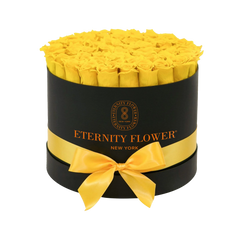Creating long-lasting, beautiful resin crafts with dried flowers is an art that combines creativity with technique. This step-by-step guide is designed to unveil the secrets behind perfecting this craft.
Whether a beginner or a seasoned artist, the following tips and tricks will help navigate through the process with ease, ensuring the creation of stunning resin pieces that preserve the beauty of nature indefinitely.
Choosing the Right Flowers

Selecting the right flowers is crucial. Opt for those with vibrant colors and intact petals for the best visual impact. It's recommended to dry flowers using silica gel to maintain their color and shape.
This preparation step ensures that the natural beauty of the flowers is preserved, enhancing the overall appearance of the resin art.
Pre-treatment of flowers with a sealant can prevent color bleeding and maintain the integrity of the petals within the resin. Applying a thin coat of clear spray can achieve this, preparing the flowers perfectly for the resin encapsulation process.
Preparing the Workspace

A clean, well-ventilated workspace is essential. Cover the work surface with wax paper or a silicone mat to prevent resin from sticking. Having all materials and tools organized before starting can streamline the process, making it more enjoyable and less prone to errors.
Ensure the room is at an optimal temperature, as resin reacts to heat and cold, which can affect curing times and the final outcome. A stable environment will result in a smoother, more professional finish.
Read More: Lily Flower Meaning: Spiritual Insights and Symbolism
Mixing the Resin

Accuracy is key when mixing resin and hardener. Follow the manufacturer's instructions for the correct ratio, as this affects the curing process and the durability of the final piece. Stir the mixture slowly to minimize air bubbles, which can mar the clarity of the resin.
Allowing the mixed resin to rest for a few minutes before pouring can also help reduce bubbles. This patience in preparation pays off in a clearer, more professional-looking finish.
Pouring the Resin

Start with a thin layer of resin in the mold or bezel. This base layer should be allowed to partially cure before adding flowers. It creates a smooth surface that enhances the flowers' appearance and prevents them from floating to the top.
Strategically placing the dried flowers onto the partially cured resin layer, then carefully pouring the remaining resin, ensures each flower is perfectly encapsulated. This method maintains the desired placement and orientation of the flowers.
Read More: Iris Flower Meaning: What's Behind the Bloom?
Removing Air Bubbles

After pouring, air bubbles may appear. Using a heat gun or a torch lightly over the surface can pop these bubbles, but caution is needed to avoid overheating the resin. This step is critical for achieving a glass-like finish.
Tapping the sides of the mold gently can also help bubbles rise to the surface and pop. This simple technique can be surprisingly effective in creating a flawless finish.
Curing Process

Patience during the curing process is vital. The resin needs to cure completely before demolding, which can take from 24 to 72 hours depending on the resin type and environmental conditions. Rushing this process can lead to sticky surfaces or incomplete curing.
Keeping the curing resin in a dust-free, stable environment ensures that the surface remains pristine and the flowers are perfectly preserved.
Read More: Lotus Flower Meaning: A Guide to Its Symbolism
Finishing Touches

Once fully cured, the resin piece can be demolded and sanded if necessary. Sanding should be done carefully to maintain the integrity of the piece and prevent damage to the flowers. Polishing with a resin polish or wax can restore the resin's shine after sanding.
Adding findings or mounts for jewelry, or incorporating the resin piece into larger crafts, adds the final touch. This customization brings the piece to life, making it ready for display or wear.
Displaying Your Resin Art

Resin art with dried flowers makes for stunning decorative pieces or unique gifts. Displaying these creations in areas that avoid direct sunlight can prolong their life, as UV light can cause resin to yellow over time.
Using UV-resistant resin or applying a UV-protective spray can also help protect the colors of the flowers and the clarity of the resin, ensuring that these beautiful creations can be enjoyed for years to come.
Read More: Poppy Flower Meaning: Myths and Legends Explored
Conclusion
Mastering the art of resining dried flowers is a fulfilling journey that blends creativity with precision. By following these tips and tricks, the process becomes less daunting, paving the way for perfect results. Each step, from selecting the right flowers to applying the finishing touches, contributes to the creation of long-lasting, beautiful resin crafts.
With practice and patience, it's possible to transform dried flowers into timeless pieces of art that capture the essence of nature's beauty. This guide serves as a foundation, encouraging artists to explore their creativity and develop their unique style within the realm of resin art.


























